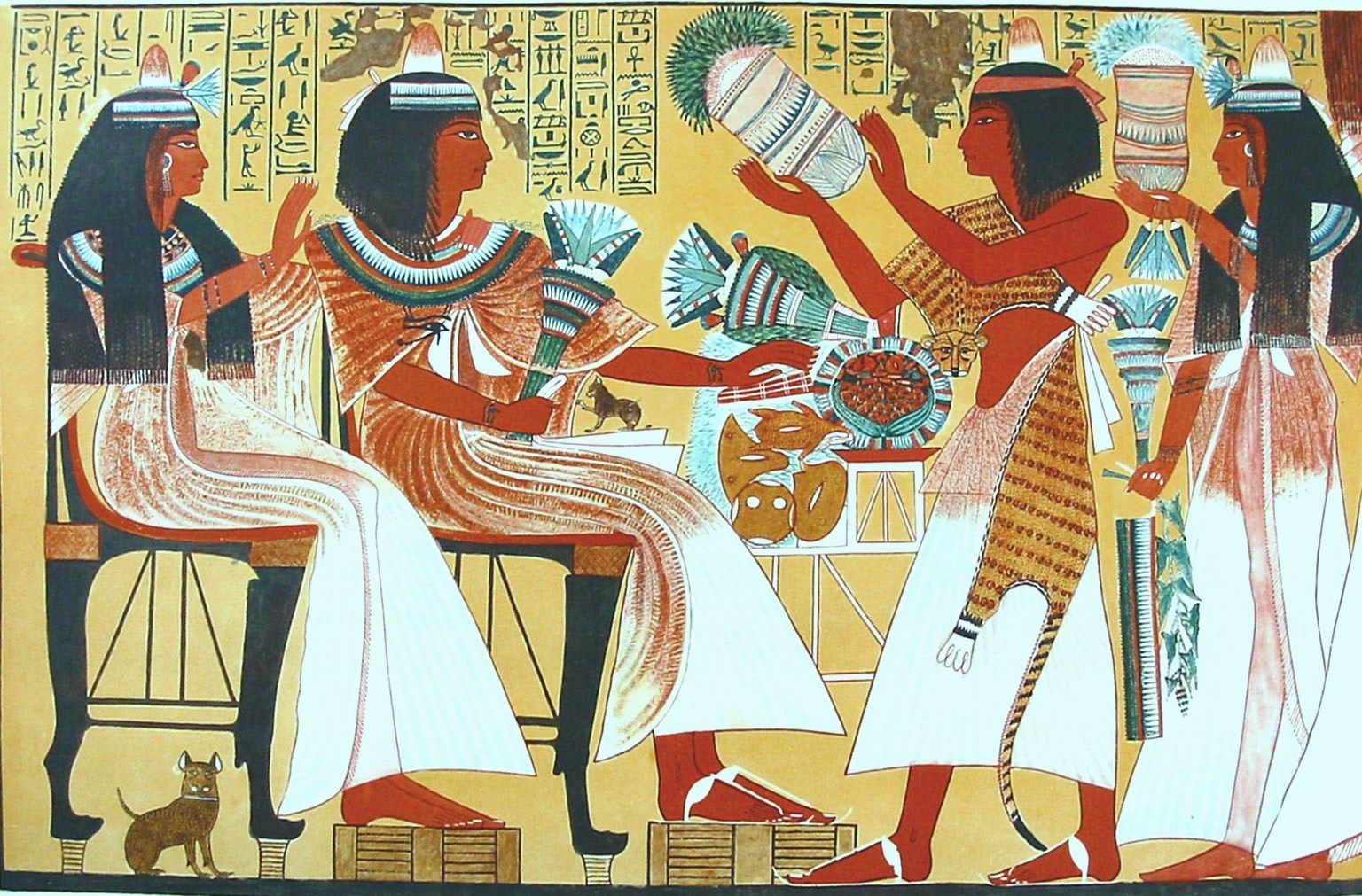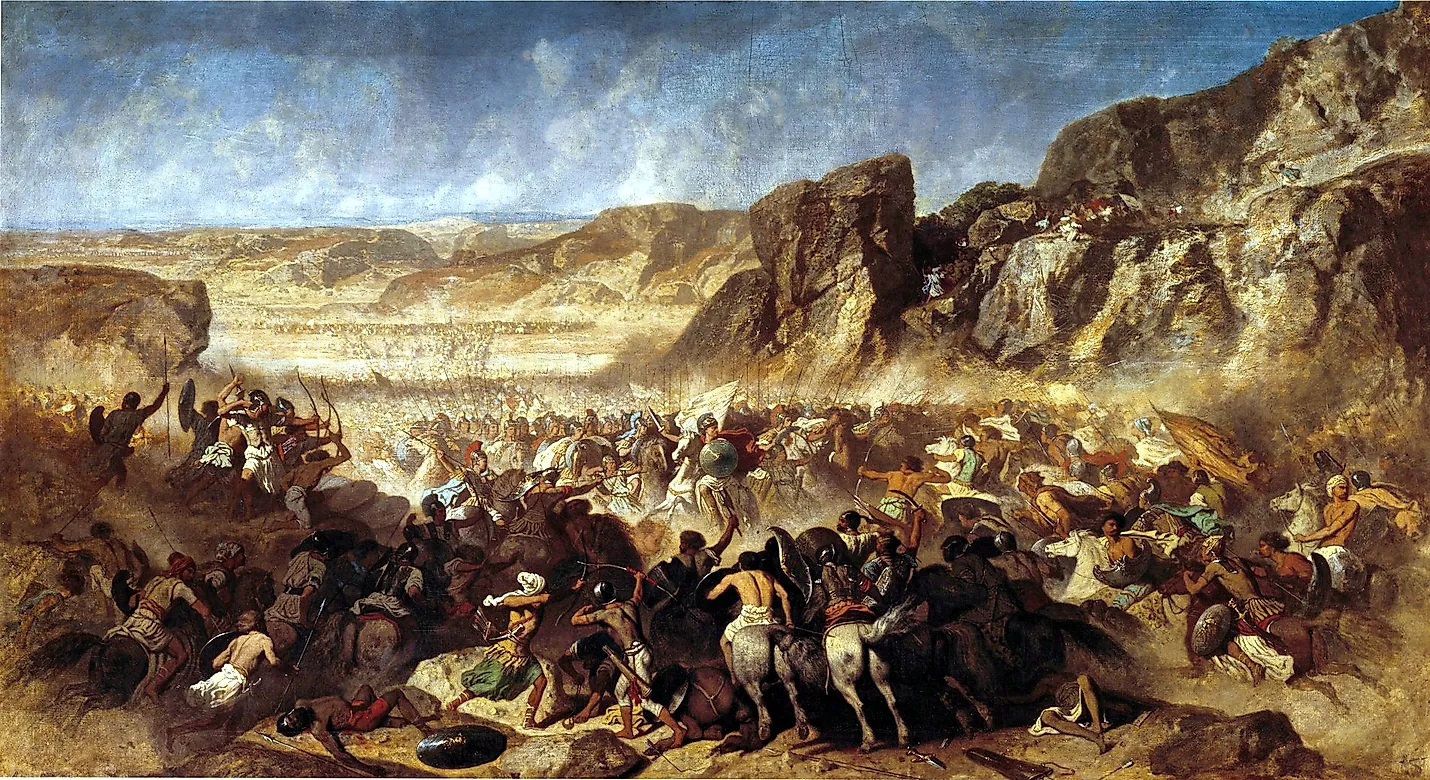Origins of the Hoplite Phalanx
Early Development and Tactics

The origins of the hoplite phalanx can be traced back to ancient Greece during the 8th century BC, specifically in the city-states of Sparta and Corinth.
Before the development of the hoplite phalanx, armies in ancient Greece were primarily composed of lightly armored skirmishers, such as the psiloi, who used javelins and light spears to harass enemy lines from a distance.
The introduction of the hoplite phalanx revolutionized warfare by creating a dense formation of heavily armored infantrymen who could advance on an enemy with near impunity.
The early development of the hoplite phalanx is attributed to the Spartans, who first employed this tactic during their wars against neighboring city-states in the 8th century BC.
Initially, the hoplites were equipped with long spears called doru, which weighed up to 10 kg and were designed for thrusting rather than throwing.
The development of the hoplite phalanx was closely tied to the introduction of the aspis, a large shield made from wood or bronze that was designed to protect an individual warrior while also providing protection to his neighbors in the phalanx formation.
As the hoplite phalanx evolved, its tactics became more sophisticated, with warriors developing techniques such as the “othismos,” where rows of hoplites pushed forward against enemy lines using their shields and spears.
The othismos was an effective tactic that allowed the hoplite phalanx to break through enemy lines by creating a massive amount of pressure against the opposing force.
Another key aspect of the hoplite phalanx was its discipline, which required warriors to maintain tight formation and not yield ground under any circumstances.
This discipline was fostered through rigorous training and strict codes of conduct that emphasized the importance of standing firm in the face of enemy pressure.
The combination of heavy armor, long spears, large shields, and strict discipline made the hoplite phalanx a formidable force on the battlefield, capable of delivering crushing blows to enemies who failed to match their level of organization and coordination.
The hoplite phalanx was a tactical formation developed by ancient Greek citystates, with evidence suggesting it emerged around 700 BC. The phalanx allowed for dense, layered formations that provided mutual support to individual hoplites, thereby increasing their defensive capabilities. University of Pennsylvania archaeologist Dr. William Landon notes that the early phalanxes were likely formed as a response to the need for coordinated military efforts.
The origins of the hoplite phalanx date back to ancient Greece, where it emerged around 700 BC as a tactical formation developed by city-states.
The phalanx was characterized by dense, layered formations that provided mutual support to individual hoplites, thereby increasing their defensive capabilities and allowing them to present a united front on the battlefield.
According to University of Pennsylvania archaeologist Dr. William Landon, the early phalanxes were likely formed as a response to the need for coordinated military efforts in the face of external threats and rival city-states.
This was a strategic development that allowed the Greeks to pool their resources and manpower, creating a more formidable force on the battlefield than individual city-states could muster alone.
The phalanx formation relied on long spears held by each hoplite, known as pikes or doru, which were typically around 6-7 meters (20-23 feet) in length.
This created a wall of points that was nearly impenetrable to enemy forces, making it an effective and intimidating formation on the battlefield.
Over time, the phalanx underwent various modifications and refinements, with different city-states developing their own distinct approaches to this tactic.
The hoplite phalanx became a defining feature of ancient Greek warfare, playing a crucial role in many key battles and shaping the course of Greek history.
Evolution and Impact
The origins of the Hoplite phalanx can be traced back to ancient Greece during the 7th and 6th centuries BCE.
During this period, Greek city-states were undergoing significant changes due to the influence of Mycenaean culture, which had a lasting impact on the development of warfare in the region.
The introduction of ironworking and the creation of more sophisticated armor led to a shift away from lighter, more agile fighting styles towards heavier, more powerful ones.
The early Greek armies were composed primarily of infantry, with each warrior bearing an 18-pound shield called a hoplon
The hoplite phalanx was born out of the need for greater stability and defensive capabilities on the battlefield, which allowed for more effective use of the long spear, the doru.
Initially, the phalanx formation was composed of a dense line of 8-12 men, each standing shoulder to shoulder with their comrades in a tight, shield wall.
As time passed, this tactic became more widespread and refined, resulting in larger formations of up to hundreds of soldiers, all tightly packed behind their shields and spears.
The phalanx was not just a formation, but an tactical unit that relied on the individual hoplites working together as a cohesive unit to achieve victory on the battlefield.
The key to the success of the phalanx lay in its ability to maintain a tight shield wall while advancing or retreating.
This formation was nearly impenetrable when done correctly, with each soldier’s aspis overlapping their neighbor’s, creating an almost solid wall of protection.
The hoplites would advance in this formation, the long spears projecting outwards from the shield wall like a hedgehog’s quills, allowing them to maintain a safe distance from their opponents while still delivering devastating blows.
The phalanx was also incredibly resilient, able to withstand even the most intense attacks as long as its members stood firm and maintained their formation.
Its impact on warfare was profound, influencing military tactics for centuries to come and shaping the course of history in ways both subtle and dramatic.
The Greek citystate of Sparta played a significant role in refining the tactics associated with the hoplite phalanx, leveraging it to establish its dominance on the battlefield. By the 5th century BC, the phalanx had become an integral part of Greek warfare strategy. Historian Peter Krentz highlights the effectiveness of this formation in the battles of Marathon and Plataea.

The origins of the hoplite phalanx date back to ancient Greece, where it emerged as a powerful infantry formation during the 8th century BC.
Initially, hoplites were citizen-soldiers who equipped themselves with armor and shields, typically made of bronze or leather, to form a dense line on the battlefield.
The Greek city-state of Athens, under the leadership of Solon, is often credited with developing the first organized phalanx formation.
However, it was the Greek city-state of Sparta that refined the tactics associated with the hoplite phalanx, leveraging it to establish its dominance on the battlefield.
The Spartans perfected the art of phalanx warfare by employing a tight formation of heavily armed and armored infantrymen, typically numbering between 8-12 men deep.
This dense line of shields created an impenetrable wall that protected the hoplites behind it and allowed them to advance in a coordinated manner on the battlefield.
The phalanx had become an integral part of Greek warfare strategy by the 5th century BC, with historians such as Peter Krentz highlighting its effectiveness in battles like Marathon and Plataea.
The hoplite phalanx played a crucial role in many famous battles of ancient Greece, including Thermopylae and Delium.
Key features of the hoplite phalanx included:
A dense formation of heavily armed infantrymen
Tight shields to protect each other from enemy projectiles
A coordinated advance on the battlefield
Emphasis on discipline and cohesion among hoplites
The phalanx proved an effective counter to the more mobile and agile armies of other civilizations, allowing Greece to maintain its independence in a tumultuous period.
By leveraging the hoplite phalanx, Greece was able to resist external invasions and eventually dominate the Mediterranean world during the Classical Period.
The legacy of the hoplite phalanx can still be seen today, with modern military forces studying the tactics employed by ancient Greek warriors in order to develop their own strategies for effective combat operations.
The March of the Hoplites
March Preparation and Organization
The march of the 10,000 Greek hoplites, led by Xenophon and other prominent Spartans, was a remarkable feat of endurance and military organization that took place in ancient Greece during the 4th century BCE.
Before embarking on their perilous journey from Thracia to Asia Minor, the hoplites underwent rigorous preparation and organization under the leadership of their commanders. This meticulous planning was essential for ensuring the successful completion of the march.
The hoplites were divided into units, with each unit comprising 100 men led by a respected commander known as an “hippeis”. These units were further organized into larger groups, with multiple hippeis leading their respective units and reporting to higher-ranking officers.
Each hoplite was equipped with the standard issue armor and arms of the time, including a helmet, breastplate, greaves, and long spear. Their shields were typically made from wood or metal and featured distinctive designs or logos representing their city-state or family crest.
To prepare for the march, the hoplites engaged in extensive training, including exercises in formation drills, battle tactics, and physical conditioning. They also practiced marching long distances with heavy loads, honing their ability to perform under fatigue and adversity.
The hoplites were required to be highly disciplined and obedient, as their commanders relied on their unwavering loyalty and adherence to orders in the face of uncertainty and danger. Each man was responsible for knowing his place within the formation, following instructions from his superiors, and executing his duties with precision.
Additionally, the hoplites were encouraged to maintain high morale through storytelling, music, and other forms of entertainment during their long marches. These social activities helped foster camaraderie and a sense of shared purpose among the troops, which was essential for sustaining them throughout the grueling journey.
The 10,000 Greek hoplites’ march was an extraordinary example of ancient military organization and discipline, demonstrating the remarkable capabilities of these highly trained warriors when working together in perfect harmony.
Before embarking on a march, hoplite forces would meticulously prepare by stockpiling supplies and coordinating with local allies. The logistics involved in feeding such large numbers were considerable, but Greek armies generally relied on plundered resources as they marched. Ancient Greek historian Thucydides notes that during the Peloponnesian War, both sides made extensive use of logistical supply lines to support their armies.
The March of the Hoplites was a pivotal event in ancient Greek history, showcasing the military prowess and logistical capabilities of the hoplite forces. Before embarking on this march, the Greek commanders would have meticulously prepared by stockpiling supplies and coordinating with local allies.
The logistics involved in feeding such large numbers of soldiers were considerable. Greek armies generally relied on plundered resources as they marched, taking advantage of the rich agricultural lands and fertile valleys along their route. This approach not only provided for the immediate needs of the soldiers but also allowed them to gather intelligence and disrupt the enemy’s supply lines.
Ancient Greek historian Thucydides provides valuable insights into the logistical challenges faced by the hoplites during the Peloponnesian War. According to Thucydides, both sides made extensive use of logistical supply lines to support their armies, highlighting the complexity and importance of these efforts.
The march itself was a testament to the discipline and organization of the Greek army. The hoplites were a highly trained and well-equipped force, with each soldier carrying a long spear (dory), a shield (aspis), and a short sword (xiphos). Their formation, known as the phalanx, was a dense array of shields that presented an almost impenetrable barrier to the enemy.
The March of the Hoplites was not just a military operation but also a strategic maneuver designed to intimidate and demoralize the enemy. By marching in large numbers, the Greeks were able to demonstrate their strength and capabilities, making it difficult for their opponents to resist their advance.
Despite the impressive displays of power, the march was often accompanied by logistical challenges. The Greek commanders had to ensure that their troops were adequately supplied with food, water, and other essential resources. This required careful planning and coordination with local allies, who would provide support and supplies in exchange for military protection or political concessions.
The March of the Hoplites remains an important aspect of ancient Greek history, offering insights into the military tactics, logistical strategies, and social organization of the hoplite forces. Its legacy continues to inspire scholars and historians, providing a unique window into the complexities of warfare and the development of military capabilities in ancient Greece.
March Conduct and Challenges
The march of the 10,000 Greek hoplites, also known as the Ten Thousand, was a remarkable feat of military discipline and endurance that took place in 401 BCE. This event has become one of the most enduring tales of ancient Greek history and continues to fascinate historians, scholars, and enthusiasts alike.
The hoplites in question were a force assembled by Cyrus the Younger, the Persian prince who sought to overthrow his brother, King Artaxerxes II of Persia. The 10,000 hoplites were primarily composed of Greek mercenaries who had been hired to fight on behalf of Cyrus and consisted of veterans from various city-states across ancient Greece.
March Conduct
The march of the Ten Thousand was a testament to the discipline and organization of the hoplite forces. Under the command of the brilliant but sometimes erratic general, Xenophon, the Greeks successfully navigated treacherous terrain, hostile tribes, and inclement weather conditions. Their conduct on the march set a high standard for military professionalism, showcasing the values of ancient Greek society such as andreia (manly courage) and logos (reason).
The Greeks employed a system of rotating officers and allowing individuals to share leadership responsibilities. This fostered camaraderie and reinforced the bonds between the soldiers, which proved vital in times of adversity. Moreover, their reliance on shared discipline rather than strict hierarchical authority allowed for flexibility and adaptability in response to changing circumstances.
Challenges
The march of the Ten Thousand was not without its challenges. The Greeks encountered various obstacles such as unforgiving weather conditions, treacherous terrain, and hostile local tribes that threatened their survival and mission. Additionally, internal power struggles and leadership conflicts often hindered progress and strained relations within the command structure.
Furthermore, the Greeks faced logistical hurdles including supply chain management, medical care, and maintaining morale in the face of prolonged hardship. The need for continuous support and resupply weighed heavily on the soldiers, who had to cope with fatigue, hunger, and disease as well as psychological strain from being away from home and family.
Despite these challenges, the Greek hoplites persevered, driven by their sense of duty, loyalty to each other, and unwavering commitment to their cause. Their determination and resilience in the face of adversity remain a testament to the unbreakable bonds between comrades in arms and an enduring legacy that continues to inspire soldiers and historians alike.
The march of the 10,000 Greek hoplites serves as a poignant reminder of human endurance, military discipline, and the indomitable spirit of those who put country, duty, or honor above all else. This remarkable tale has been etched in history and continues to captivate us with its themes of loyalty, leadership, and the enduring power of camaraderie.
The march of 10,000 hoplites posed significant logistical challenges due to the scale of resources required. Marching with such a large force would likely necessitate regular rest days to avoid exhaustion and prevent stragglers from being left behind. Historians have noted that ancient armies often suffered from desertion during lengthy campaigns.
The March of the 10,000 hoplites was a remarkable event in ancient Greece, demonstrating the discipline and organizational skills of the hoplite phalanx formation. However, this impressive display of martial prowess also highlighted the logistical challenges involved in marching such a large force.
Logistically, the march of 10,000 hoplites would have required significant resources to sustain the army over an extended period. The ancient Greeks were skilled at mobilizing and supplying their armies, but even so, feeding and equipping such a large number of soldiers posed a formidable task.
The scale of resources required for this march would likely necessitate regular rest days to avoid exhaustion and prevent stragglers from being left behind. It was essential for the army’s morale and cohesion that soldiers were given adequate time to recover from the rigors of marching.
Furthermore, historians have noted that ancient armies often suffered from desertion during lengthy campaigns. The psychological strain of prolonged marching, combined with the physical demands of fighting and the uncertainty of battle outcomes, could take its toll on even the most dedicated soldiers.
The march of 10,000 hoplites was a remarkable achievement that showcased the discipline and organization skills of ancient Greek armies. However, it also underscored the logistical challenges involved in maintaining large-scale military operations in antiquity.
It is worth noting that while we have accounts of this march from ancient sources, such as Xenophon’s “Anabasis,” they often provide incomplete or biased information about the experiences of soldiers during these events. Nonetheless, studying the historical record can offer valuable insights into the challenges and complexities faced by ancient armies.
The legacy of the March of the 10,000 hoplites has endured for centuries, inspiring countless works of literature, art, and history that have sought to capture its spirit and significance. From ancient Greek vase paintings to modern-day military tactics, this event continues to captivate imagination and inspire awe at the discipline and organization skills of our ancestors.
- Animals That Live In The Tundra - September 1, 2024
- Animals That Live In Madagascar - September 1, 2024
- 10 Largest Cities In Hawaii - September 1, 2024


